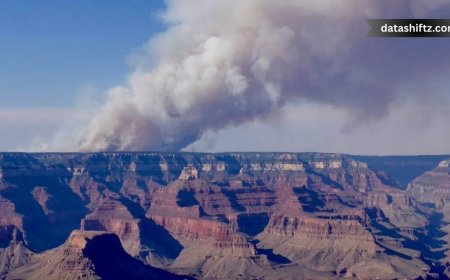North Ogden Fire: Unpacking the Blaze, Its Risks, Response, and What Residents Should Know

Introduction
On August 13, 2025, a wildfire erupted near North Ogden, Utah—initially dubbed the "North Ogden Fire," now known as the Willard Peak Fire. Sparked by a vehicle fire, the blaze rapidly spread uphill through dry brush and gamble oak, prompting mandatory evacuations, power outages, and a strong emergency response. With over 100 homes evacuated, power cut to nearly 30,000 customers, and 15–20 structures currently under threat, the situation is unfolding fast. This in-depth blog post will explore the cause and timeline of the fire, examine response strategies and challenges, assess threats to property and safety, and provide clear guidance for affected residents.
The Origin & Timeline of the Willard Peak Fire
How It Started & Immediate Spread
The wildland fire began after a vehicle fire ignited nearby dry brush and gamble oak—materials known for their "flashy" fire response and rapid ignition. By mid-afternoon, the blaze had already engulfed between 50 to 75 acres and was uncontained .
Evacuations & Escalation
Local authorities issued evacuation orders for residents living east of 1050 East and north of 3300 North—areas on the mountainside deemed especially vulnerable As the fire intensified and wind conditions shifted unpredictably, the blaze expanded to cover 150–200 acres, placing 15 to 20 structures, possibly more, under threat. Officials continue to ask the public to avoid the area to ensure safety and clear access for emergency responders .
Response Efforts, Challenges, & Protective Measures
Firefighting Strategies
Ground crews are working furiously to establish fire lines and contain the spread; however, shifting winds have grounded much-needed aerial support . Helicopters and air tankers have been deployed when conditions allow, dropping water and fire retardant to slow the uphill push of the flames.
Infrastructure Impact & Community Disruptions
As a precaution, Rocky Mountain Power de-energized power lines, leaving nearly 29,000–30,000 customers without electricity to reduce the risk of spark-generated fires.
Temporary Shelters & Support
The American Red Cross of Northern Utah has opened emergency shelters to support displaced residents . Additionally, authorities arranged for emergency livestock accommodations at nearby fairgrounds, highlighting the concern for both people and their property.
At-Risk Areas & Fire Behavior
To better illustrate the situation, here’s a table summarizing the most critical details currently:
| Element | Details |
|---|---|
| Cause | Vehicle fire igniting dry brush and gamble oak |
| Initial Size | 50–75 acres |
| Current Size | Up to 150–200 acres |
| Evacuation Zones | East of 1050 E & north of 3300 N |
| Structures Threatened | 15–20+ homes and buildings |
| Power Disruption | 29,000–30,000 customers without electricity |
| Firefighting Tactics | Ground crews, limited aerial drops due to erratic winds |
| Shelter Locations | Red Cross shelters and livestock support at fairgrounds |
| Public Advisory | Avoid the area to allow for emergency operations and clear roads |
What Residents Should Do—A Practical Checklist
Immediate Actions for Safety
-
Obey evacuation orders immediately—safety comes first.
-
Register at official shelters (e.g., Red Cross locations) even if staying elsewhere to aid emergency accountability and response.
-
Account for pets and livestock—visit fairgrounds or emergency locations if necessary.
-
Avoid the fire zone entirely—let crews work unimpeded and roads remain clear.
Managing Power Outages & Home Preparedness
-
Turn off major appliances if still with power—to reduce potential overload when power is restored.
-
Prepare for overnight power disruptions—have flashlights, charged devices, and essentials ready.
-
Mark your property—clearing defensible space around homes helps firefighters protect your house.
Staying Informed
-
Monitor trusted local updates for fire progression, road closures, and return advisories.
-
Be cautious of rumors—only follow verified information via official local government or emergency services.
-
Stay reachable—keep communication channels open with family, neighbors, and local authorities.
Key Takeaways & Final Thoughts
Summary List of Insights
-
The blaze began as a vehicle fire, amplified by dry, flammable vegetation.
-
Rapid spread and shifting winds have made containment difficult.
-
Mandatory evacuations protect homes and save lives.
-
Nearly 30,000 residents are without power as a safety measure.
-
Coordination of shelters and livestock clinics underscores comprehensive preparedness.
-
Public cooperation—staying out of the way—is crucial to efficient firefighting.
-
Clear communication and readiness can safeguard individuals and homes.
Conclusion
The Willard Peak Fire near North Ogden serves as a stark reminder of how quickly wildfires can ignite and expand in dry, windy conditions. Initiated by what seemed like a contained vehicle fire, the blaze rapidly grew, prompting significant evacuations, power shutdowns, and aggressive fire containment efforts. While no homes have yet been lost, the threat remains—and so does the need for vigilance, preparation, and unity.
For residents in the area: follow evacuation instructions, leverage available shelters and resources, and remain alert to updates. For everyone else: this is a powerful example of the importance of natural hazard preparedness, rapid response, and community resilience in the face of wildfire.





























